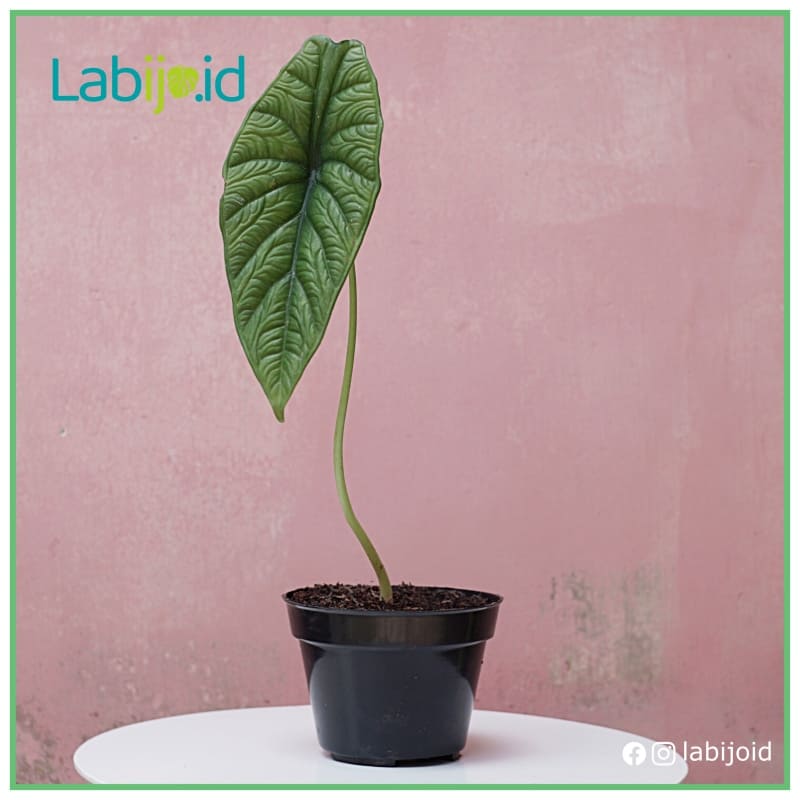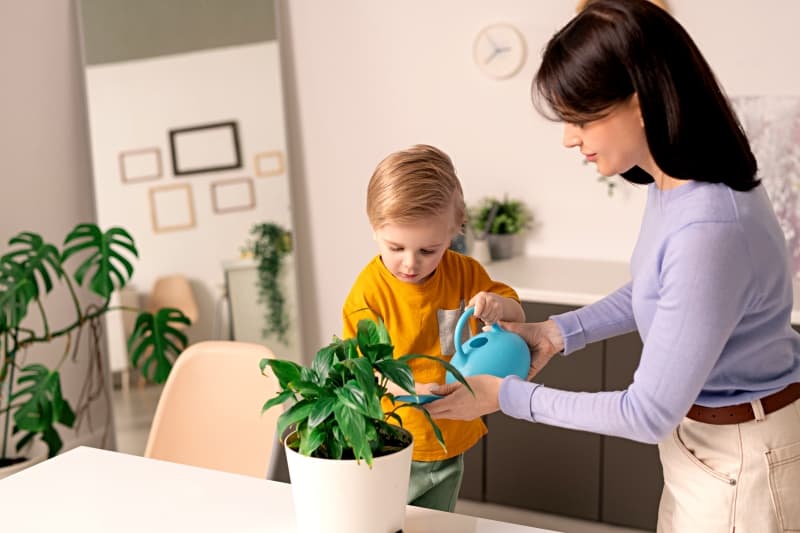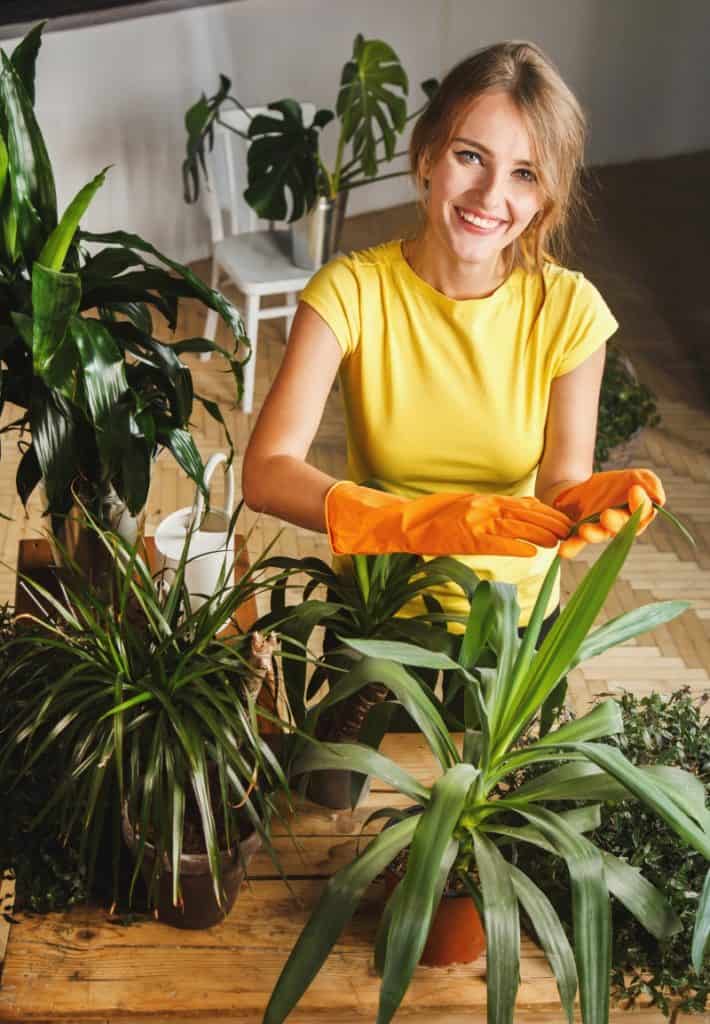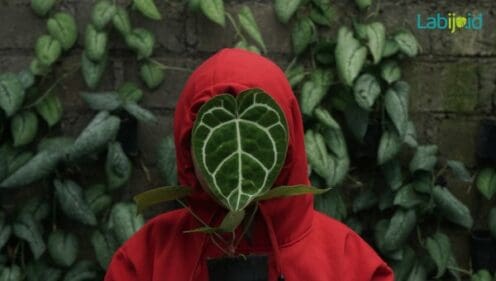Buy Alocasia Puncakborneensis can be easy, but taking care of them can get stressful. Especially when you are a beginner in the plant community or maybe just starting with Alocasia.
In this article, we’ll take you general care for Alocasia Puncakborneensis that are easy to follow for any level plant parents. We will cover lighting, watering, soil, humidity, and some solutions to fix them.
Getting to Know Alocasia Puncakborneensis

Alocasia Puncakborneensis is a rare tropical plant from the Alocasia genus which was discovered in 2020. They are native to Borneo, Indonesia in the deep of the forest.
People find charm in Alocasia Puncakborneensis because their glossy foliage allure and beautiful lush green are exceptional. Other than that, they are perfect as the centerpiece of your room.
Even though Alocasia Puncakborneensis comes from a forest, they still can thrive inside the house as houseplants. With proper setting and care, they can thrive and grow fast like in the forest.
Essential Alocasia Puncakborneensis Care

Lighting
Like other Alocasia, your Alocasia Puncakborneensis prefer to stay in the bright indirect areas. When the areas get too dark, it will make them hard to thrive, not enough sun to process their photosynthesis. Try mimicking forest lighting, where most alocasia gets a lot of sun but stay under the tree’s canopy where they don’t get sun directly.
The direct sun will bring no good for them. It will make their foliage burn and start to fall. Artificial lighting will help a lot to prevent their burn with the right setting like use a lighting diffuser and let the light on for 10-12hours/day.
Try to rotate your Alocasia Puncakborneensis regularly, so all the sides will get the same amount of lighting. Especially if you put them near the window which only gets one side lighting, it will make the growth unbalanced.
Soil
Alocasia Puncakborneensis loves a well-drained soil mix with a lot of aeration. It means your water will go smoothly through the soils to get moist enough, not soggy. With a lot of aeration, it will prevent fungi potential that could harm your Alocasia Puncakborneensis.
Water
In general, Alocasia loves to stay in moist soil all year. Keep in check to make sure they are not in soggy soils because when you give too much water and the soil gets soggy, it will be a problem for your Alocasia Puncakborneensis.
During spring and summer days, where the days are getting warmer, you can water your Alocasia Puncakborneensis 2-3 times a week. But when fall and winter come, where the days are colder, you need to adjust watering intake since their soil tends to evaporate more water than spring or summer.
Always use water at room temperature to prevent Temperature shock. If possible, use rainwater or pure water. Tap water can be too harsh for them.
Temperature and Humidity
Native to the Borneo forest, Alocasia Puncakborneensis will prefer to stay between 25-35C. On some days, Borneo’s temperature could drop to 20C but making it slightly warmer would be better to prevent the plants from getting shocked.
In average humidity, Borneo has a high humidity of more than 80% all year. If you live in low humidity areas, you can start to regularly spray areas with water to raise the humidity level. Try to invest in humidity meters to check it more accurately.
Fertilizer
Using fertilizer for your plants is a big help when you give it accordingly on the labels. Always use moderately and follow all instructions on the fertilizer labels to prevent harmful side effects. More than that, fertilizers are the best to use in spring and summer when your plants tend to grow rapidly.
Repotting
Once your Alocasia Puncakborneensis is growing, you will need to repot your plants to help them grow bigger and healthier. For Alocasia Puncakborneensis, on average you will need to repot them after 12-24 months in summer days since during summer your plants are still at their strongest stage.
Common Alocasia Problem

Droppy Leaves
When your Alocasia Puncakborneensis has droopy leaves it could mean water problems, under watering or overwatering. Try to touch the soil to make new adjustments to their water needs.
Spider mites
Alocasia Puncakborneensis is sensitive to pests like spider mites. If your Alocasia Puncakborneensis get this pest, don’t be panic You can handle it with simple steps.
First, isolate your Alocasia Puncakborneensis from other plants to prevent spreading. Second, with soapy water and a gentle cloth, wipe the foliage and stem gently. After the soapy water, you can use neem oil to make sure all is clean from spider mites. Then increase humidity around the plants because the spider mites don’t like high humidity.
To prevent spider mites, you can clean all the dust from your plants regularly. It will also help your plants to photosynthesize better.
Always pay attention to your Alocasia Puncakborneensis, since each of them has different needs and preferences. Their adaptable time and conditions can vary too depending on many factors like lighting, type of water, also locations. Once you know what they need, Alocasia Puncakborneensis is your best friend.
If you are looking for Alocasia Puncakborneensis, you can get them here.
